Part Two of Four
Gear everywhere! In TAKOTA for a 24 Hour Rest.
Tony and Rose look up from their nap.
NIKOLAI was a good layover. Apparently, Allen was there at the same time, but we actually never crossed paths. My mom left in the afternoon via airplane and flew to MCGRATH. She vowed to see me there – no matter what time I arrived. So, I went back to the team, grabbed my leash and walked a few dogs around – it’s nice to stretch them out after their sleep. I had two pups who seemed “off”. Snickers still had a foot soreness and Rose now seemed a little stiff when I walked her. Rose is a delightful dog. She works so hard and really puts 100% effort into every step. When I think of sled dog work ethic, she tops the scale. But, she also takes her rest time seriously. During our spring time Mushing Adventure Trips she’ll pull harder than any dog on the team, jumping and barking to go. But, upon arriving at camp, she’ll be one of the first dogs in the tent, on the cot, even under the sleeping bag. She had no sleeping bag in NIKOLAI – maybe that was the problem? I worked on Snickers and Rose, individually, for 30 minutes as I heated some broth for the team. Snickers’ paw was actually swollen. He would put weight on it, but I had heard stories about sled dogs who have run with broken toes, and I didn’t want him to do that. So, with out really knowing what exactly was wrong or how it happened, I excused him from the team. I had originally thought that he would be my main leader at the finish – so, I had to change that dream. After her rub down, Rose peed and was ready to go. There’s a dog that doesn’t depend on “a cup of Joe” and a pep talk in the morning. She made her impatience known as she barked and screamed at the delight of getting back on the trail. This created quite a stir in Quito, Tatfish, Olivia and Nacho. The team was a solid 14 dog string now. I moved Tony farther back in the team and pushed Tatfish up towards the front. Tatfish is a hyper, non focused dog that I prefer to run near the rear, but he was wild with energy and so I let him take the “cheerleader” role for a while. I considered the middle of the team the least stressful spot, so I ran Rose and Butterscotch there. They both try so hard. I kept Scout and Quito in lead. These two were really becoming an impressive leadership duo. It was early evening when we pulled out of the checkpoint. The sun was still over head and zapped a little of the speed from the dogs right away. But, with in an hour, the shadows got longer, the breeze picked up, and soon, the team had a nice pace down the trail. I like this section of trail. It varies little, year to year, and so we skirted beaver ponds, whipped through portage trails and trotted down the Kuskokwin River in a predictable fashion. I could imagine similar trails over a thousand years ago that connected Indian villages of the past. I was pleased on the previous run that the team ate their snacks well. So, this time, I carried both salmon and red meat snacks. They still liked the salmon better. On one snack break, I looked back down the trail and saw a gorgeous dog team closing in on us. The leaders were tall, red and FAST! I clambered to get my little huskys out of the way, but Boondocks stood right in the middle of the trail. DeeDee Jonrowe had to come to a complete halt or her sled would have crushed my 34 pound two-year old pipsqueak. That fact that two 80 pound dogs towered right next to her didn’t seem to phase her a bit. I had to run over and physically move Boondocks out of the way so DeeDee could pass . Boondocks seemed to look at her team like, “Yea. Whatever… ya big lugs!” We stayed within sight of DeeDee for a few miles but her over all speed was quite a bit faster than ours. In a few hours the team saw the lights of MCGRATH and perked up. We could smell the wood smoke from the stoves in the village. My leaders were comfortable as we skipped up off the river and made a few detours through the edge of town with dogs barking and people clapping. There were flood lights and a crowd of folks waiting for us near the community center. MCGRATH is another popular spot for race spectators. The television cameras blinded me but the team seemed to find their way into the chute of people. Long time checker, Mark Cox and his son were there to sign me in. With the lights in my eyes, I couldn’t see any faces. So, I asked “Does anyone know if my Mom is here?” I heard a resounding “Yes” and she came up to the sled. We had just a quick hug and “hello” before I moved out down the trail again. As we left MCGRATH, the team jumped back down on the frozen river and trotted parallel to the village for over a mile. The river itself is dark and peaceful. But, only several hundred feet up the bank is quite the hubbub of activity. Snow machines, people and cars made noise and lit up the river bank. My entire string of dogs trotted down the trail while peering off to the left. “Are we missing something over there?” After 10 minutes, we finally left the lights behind and they focused ahead. The short run over the hills to TAKOTNA can be a bear, but this year is seemed enjoyable. It was two and a half hours of mushing by moonlight. The weather seemed to be holding steady for the first few days of the race. In past years, when the weather was great in the beginning of the race, the bottom of the thermometer dropped out on the Yukon or the Bering Sea winds blew for days on end. This year… only time would tell.
Mandatory 24-hour Rest Stop We pulled into TAKOTNA . Fifteen teams had arrived there before us. We parked high up on the hill overlooking the village and the river. It was still the middle of the night and the stars were bright – just gorgeous! I had pre packed a lot of dog food and snacks for this checkpoint in hopes that I would take my 24 hour layover here. It looked like that would be the smartest move in terms of weather conditions and trail times. So, I snacked the squad with a watery broth of meat and fish right away. I wanted their hydration to be a priority. But, they needed some calories with that, so I grabbed some Eagle kibble and sprinkled it in little piles on the snow for every dog. They loved that! So I added more and more as they gobbled the dog food off the ground. Soon they all had full meal – kibble and water with snacks. Perfect. I rubbed down all of the dogs with a massage balm called Algaval. I started with their feet, and worked up their legs to finish up on their backs. This took me quite a long time. I’ve learned in the past, the start of your 24 hour rest is the best time to learn about any soreness in your dogs or yourself. That way you can tend to these issues right away instead of being surprised by them when you are ready to leave. Rose was particularly sore on her front left. I couldn’t find the spot that hurt, but it seemed swollen. I massaged and rubbed everywhere. I even borrowed some holistic anti inflammatory rub from Michelle Phillips. She practically had a “witch’s bag” of oils, ointments and rubs in her sled bag. (Note: Michelle also finished the race with more dogs than any racer this year. Thirteen.) After a few hours, my dogs were blanketed, despite the warm temperatures, and they looked comfortable resting between Bruce Linton’s and Pete Kaiser’s teams. I went into the checkpoint headquarters to grab a bite to eat. Allen had just arrived at the checkpoint so we sat together. He is always very chipper and humorous during Iditarod. I’m sure that’s why everyone likes to travel with him. He was sharing a few stories of various calamities on the trail. Allen is always helping people, picking up other people’s gear and generally “in the right place at the right time”. His mindset during the Iditarod is entirely different from every other race of the season. This is the only race that he is not necessarily trying to win. Yes, he’d like to be competitive, but the individual dogs that make up his team are not of the calibre to win. I think this year especially, after a grueling Yukon Quest in February, his “more casual” Iditarod race outlook was refreshing and fun for him and those around him. The volunteers at TAKOTNA strive to offer 5 star cooking here in “the middle of no where” and they do a darn good job. I ordered breakfast – my favorite meal. Mike Williams Jr. was eating with us, so we chatted with him for a spell. He is the son of long-time Iditarod musher, Mike Williams Sr. – from a village in Western Alaska. Allen has raced with Sr. quite a bit in the past few years. But, Jr. was taking the team to a new competitive level this season. He had a nail biting 2nd place finish in the Kusko 300 Sled Dog Race in January and it looked like his dog team was still in perfect condition. He said the heat bothered a few of his heavier coated dogs, but all in all they were doing well. I ate my eggs, toast and potatoes. Then I drank at least a quart of water. By this time, it was early morning and I was extremely tired. It had been 3 days since I had slept – except for three 30 minute naps. So, I grabbed my personal bag and my sleeping bag, and headed to find a warm spot to sleep. Most residences in Bush Alaska are small and the cabins allotted for mushers’ sleeping quarters are no exception. I walked in the door and turned on my headlight. There were bodies in every corner – some snoring, some in tight little balls. I moved a table to the side and created an empty spot on the floor in between two shelves that would make a cozy “nest”. I fought off my fatigue just a bit longer because there were a few more important things to do. My insulation layer from Northern Outfitters was damp with perspiration. It was still wearable in this condition, but if I dried it out, it would be much more comfortable. I found a spot to hang it up with my socks, gloves and hat. I turned my beaver mitts inside out so they could dry. I had sent out extra clothes in my food drop, so I had something to wear as these clothes dried. I then went through my personal bag and laid out anything that needed to thaw out: canine foot ointment, Algaval, my drinking bottle. I also took out my rechargeable headlight batteries. I packed enough battery power to make the entire journey, but since I found an available outlet, why not use it? Finally, I set my watch alarm for noon and tucked it in my new dry hat on my head and got into my sleeping bag. I laid down in with the hopes of sleeping soundly for 5 hours. Needless to say, I slept well. I woke up only once during my slumber because I was too hot. I had to take off a long underwear layer. Sleeping indoors is quite a bit different! When I did get up, I went to the team to look at everyone. They looked comfortable, so I didn’t bother them. I took my dog food bucket to the hot water source – a huge 55 gallon drum wood-fired water heater – and filled it with boiling water. I made a fish broth again and let it cool for a short while. When I went into the checkpoint headquarters, my mom was there. She had flown to the checkpoint from MCGRATH and would be able to visit with me until early evening. So, I had another bite to eat with her and talked about the dogs. She even recorded me so that she could post “Updates from the Trail” to our website. It was fun to see her as part of my world. She was really enjoying being on the trail for the first time and talked to a lot of mushers and spectators. Our friend and pilot, Mike Lizten, decided to fly his family on an Iditarod adventure this year, so Mom was “tagging along”. I fed the dogs their meal and once again they enjoyed the fish the most. They had been resting for over 12 hours now and they needed to stretch out. So, one by one, I rubbed their legs down and took them on a walk. Quito and Scout were keeping close company in lead, so I walked them together. Olivia was very spunky so instead of me walking her, she walked me. Nacho was just about the same as Olivia, but he stopped every 15 feet to lift his leg. Tony and Butterscotch both took their time to stretch out. Nutmeg really enjoyed a back rub with her walk. Willie was a newcomer to this whole business, so he tried to visit neighboring teams and spectators. Tatfish and Biscuit are quite the tandem. When they get up to walk, they want to go! So, they both ran in circles around me on the leash, practically tying me up! Perhaps they didn’t need the additional 12 hours of rest. Boondocks was slow to get up from her cozy spot, but she felt better after stretching out. Beemer watched Boondocks the whole time and then followed her lead. Tug was more sore than I had expected and Rose looked injured. It was clear that I would have to drop Rose from the team. I found Rose’s injury, under her arm pit. It was a little swollen. I wasn’t sure why it was there. “What a strange injury”, I thought. I brought her down to the headquarters for a vet check. Rose jumped up on a chair outside the building, laid down with her chin up on the arm rest. She casually waited for the vet. Dr. Caroline Griffiths was on duty that afternoon, so she looked over Rose. She knew right away what happened and said it was a ligature injury. Huh? “She must have gotten her leg over the mainline and the rope rubbed her until it hurt!” Ohhhh. Rope burn. Darn it! That means it was completely my fault that she was injured. That really bothered me. That meant that I didn’t notice that her leg was over the line. I just couldn’t stop kicking myself in the pants for missing that! Dumb. I had to leave Rose in Dr. Griffith’s care. She had already talked to a pilot and Rose was booked on the first flight out of TAKOTNA. (After the race ended I did talk to the pilot who flew Rose out and he said that she was happy as a lark to sit in the seat during the flight. What a great dog!) Back at the team, my other question mark was Tug. She looked like she had a sore wrist. I wasn’t sure how bad it was as I walked her around. She was another one of my rookie dogs and I think that she was overwhelmed by the entire Iditarod experience. I decided to continue with her in the team and if she showed more serious signs of a wrist sprain then I would drop her in OPHIR, 20 miles down the trail. Martin Buser was the first musher to leave TAKOTNA after his 24 hour rest. He was an hour and a half ahead of the next group of mushers. He clearly had been flying down the trail. I met him outside the checkpoint building just before he left. I asked him how it was going. He said “I’ve won.” I said, “I know that you’ve won Iditarod before.” He said “No. I’ve won.” Martin has an interesting sense of humor at times. I didn’t know, but, apparently Anchorage Daily News had already claimed that this year’s race was “Martin’s to lose” after only 300 miles. Right then, I couldn’t tell if Martin was serious or mocking someone: perhaps himself, his competitors, the press. I’m sure that confusing me was also part of his intention. In this race, everyone is competition! The next group of mushers were an hour and a half behind Martin. I was to leave another three and a half hours behind them. There were three mushers who were already on the move towards the IDITAROD checkpoint to take their 24 hour rest and there was still a musher back between ROHN and NIKOLAI. That meant that there were dog teams spread out across nearly 200 miles of the trail. When I went into the building Rick Swenson was standing there. He was irritated that during a phone call to his wife, she had told him that he should pack up and come home. Earlier in the race he had broken his collar bone on a treacherous part of the trail and obviously, she was worried about him. I tried to shine his wife’s comments in this light, but he wasn’t hearing it. He said “We spent all this darn money to ship out food drops down the entire trail, so I’m using them! Only when I can’t take care of my dogs will I think of going home.” I squeaked, “OK” and went about my business. I later helped him adjust the dog harness that some Iditarod Veterinarians had taped around his shoulders to hold his collar bone in place. I quietly hoped that I would be tough enough to make the same decision if it ever came down to it. By, 2:30 AM I was ready to roll. All of the dogs were bootied and harnessed, but we were still up at the top of the hill. The Norwegian parking crew – 8 young and fit Scandinavians – appeared out of no where and helped me navigate my team down to the trail. I was a little tardy at “3….2….1….you may leave!” because I had several dogs still on long leashes instead of the shorter tug lines they need to work in harness. Soon enough, the team left TAKOTNA with a great attitude. Once again, I thought , “We have a long way to go.”
Across the heart of Alaska The run between TAKOTNA and IDITAROD is a long way: over one-hundred miles. It takes a team with endurance and a musher with confidence to make one run to that checkpoint. On the other hand, I sometimes think that mushers just find it too challenging to camp outside of a checkpoint – so they always run from checkpoint to checkpoint – regardless of distance. I have a completely different mindset. I calculate how many hours that I would like my team to run before resting. When that run time expires, I camp. I can camp on a lake, river, or ocean. I can camp in a forest, swamp or tundra field. It just doesn’t matter. I can camp anywhere. I will find a suitable place for my team to camp that is semi-secluded and off of the main trail. I am picky when choosing camp spots. Most of the time I will find a single snow machine trail that ventures off through bushes or up a ravine. Snow machine adventurists enjoy the “freedom” of making their own trail through pristine snow so, I use this to my advantage. I prefer to have a wall of trees or bushes in between the team and the main trail. There have been times when I have camped in heavily forested areas. In those cases, I twisted my team through thick tree cover and no one who passed me even knew that we were there. Regardless, when I find a camp spot, I commit to it. This way, the dogs and I know: this is “the place”. Camping is not easy or always comfortable for a lot of mushers. But I have a system, and with that system, I can camp anywhere, in any condition. I began my dog mushing career because I wanted to travel by dog team and camp. Racing the Iditarod was purely an afterthought to years of traveling in the Alaskan wilderness. So, I better be able to camp! [One of my favorite camping trips was in the Brooks Range with a 9 dog team. We traveled a 150 mile loop in over 7 days. I only saw one group of people when I camped near their fly-in cabin on Wild Lake. My only other companion was a huge meteor that soared overhead every night. It was magnificent. As I cut firewood, I remember thinking, “I am probably the only person seeing this awesome thing. Everyone one should spend sometime camping in the Arctic.” After I returned home, I was in a big grocery store. At the checkout stand, on the front page of Time Magazine there was a picture of a comet shooting across the sky and it read something like: The entire world is crazy about comets! It had been the Hale-Bopp Comet – so much for my own meteor! Now, back to Iditarod.] My plan as I left TAKOTNA was to run the dogs 8 hours or longer if the temperatures were cool enough. Then we would camp. After that, I wanted to run two more legs of similar length. By length, I mean the amount of time, not distance. So, the next three runs would put us us somewhere on or near the Yukon River. This meant that I would not stay in a checkpoint for the next 200 miles. It was a good thing that my TAKOTNA rest was so refreshing! The team looked good. There are many hills on this section out of TAKOTNA and they charged up them like it was the start of the race. We didn’t have a heavy load in the sled because my plan was to resupply at OPHIR after the team was warmed up. Tug was the weak link. She was not contributing to the overall team effort. Since, it is such a long distance from OPHIR to IDITAROD, I was afraid that she might get worse not better. So, I was wary of keeping her on the team. I had made this same decision last year with Nacho. It seemed criminal to be losing team members at such an alarming rate. But, there was no longer a question: Tug would not continue with us. We pulled into OPHIR and I needed to focus on efficiency. When a musher resupplies and continues through a checkpoint without staying, it is critical that they don’t waste time. When I am fast and focused during a resupply, the dogs understand that I am repacking and they will not be staying long. If I start to socialize or dilly-dally, the dogs get comfortable and assume that we are here for a long time. So, when I pulled into OPHIR, I was ready to pack, hand Tug over to the Vets and go. I immediately asked for a Vet to look over Tug and fill out the dropped dog paperwork. I took off her harness and put on a dog jacket. I then answered all questions about her for the Vet’s assessment. But, I also needed to go through my three food drop bags, pack the items that I needed in my sled bag, pack any items that I didn’t need in a return bag and not forget anything! While repacking my sled, I grabbed a bale of straw and took my knife from my side pocket. I reached out to cut the twine so that I could pack only a half a bale of straw and a race official yelled, “Be careful! Don’t do a Mitch Seavey.” I kinda laughed at the remark and went about my business packing the half bale into my straw bag. Much later I learned that Mitch had sliced off his finger while cutting a straw bale and had to fly directly from OPHIR to the hospital to get the finger “re-attached”. Overall, we had a quick in-and-out and stayed in OHPIR for only 15 minutes. I saw Bruce Linton was still parked and repacking his sled and Pete Kaiser left only minutes before me. Boondocks had taken off all of her booties. She and Nacho are pros at this task and Willie was learning quickly. So, just a few miles up the trail, I stopped to re booty everyone and give them all a happy pet. I felt like we were starting to really get under way in this year’s race. I consider this area the “heart” of Alaska. There are very few villages and not many local travelers. Actually, all of the travelers that I saw in this section were involved with the race. The trail is narrow and windy. It climbs up over ridges and down into valleys and I felt like could see forever. At one point I felt like we were on the top of the globe and I could see the horizon in every direction. We traveled as the sun came up and into the early afternoon. A common spot for a rest is called “Don’s Cabin”. It was built by Sonny Lindner, Rick Swenson and a few other folks back in the late 70’s. Don Montgomery, a musher from the Lower 48, donated the money for materials because he had once gotten into real trouble in this area. The cabin has been trashed over the years by bears and the weather, but it still stands as an Iditarod trail marker. At the cabin, I passed by, Jessie Royer and Pete Kaiser feeding their dogs. My team tip toed between these resting dog teams and I waved at both mushers. My plans had called for a longer run, so we continued. It was becoming a warm afternoon and we pushed on with the sun overhead. A few more teams were parked off to the side of the trail for either a short snack break or a longer camp. I wanted to put some miles behind us, but as it got warmer the team’s speed dropped. I snacked them and watched them closely. Sometimes, I feel it is a gamble to press on when your speed diminishes too much. It is logical that if you stop to rest during the afternoon warm temperatures and resume at night, the team will speed up. But, in this game of chess the questions are: Will this have put you too far behind in the long run? How much longer do you have to make your second run to compensate for an abbreviated first run? And how will this shift in time schedule effect your following runs? So, I gauged all of these questions in relation to the team’s progress. In the end, I cut just a little time off of the planned run and camped in a great spot! I “geed” the team off on a side trail to the right. The lone snow machine path paralleled the main trail for 100 yards staying 50 feet away. As the trail began to merge with the original, I said “Whoa.” The entire team knew: we were home! The sun was high in the sky and I struggled to look for a cloud. Nope. The temperature was warm and there was very little wind. I made water, fed the team, rubbed everyone down and set up my sleeping bag cocoon. A few teams passed us but only Jessie noticed our camp. We stayed there into the night. I wanted them to rest well, since the next run would be long and steady. They ate mainly dry Eagle kibble with a fish broth. I was sure happy that we had gotten so many salmon this fall! Soon, I clocked that it was time to pack up and leave this lovely spot. The moon had come up and was shining the way towards IDITAROD. When we left the team was ready. They merged back over to the main trail and started sprinting. I could see that a few of the older dogs were a bit more stiff than the youngsters in charge, so I reined them in, and slowed our pace for a few miles. Still, in 30 minutes, it was clear that Quito, Scout, Nacho and Olivia were ready to roll. Butterscotch was not! I stopped and put a shoulder coat with chemical heat warmers on him hoping to warm up his muscles artificially. He went along with it, but was not happy. I only had a few hours of trail to cover before we reached the Iditarod halfway point – IDITAROD checkpoint. We covered this distance at a comfortable and even fast pace and arrived there at 10 PM. I pulled into the checkpoint chute and announced that I needed a Vet to look at Butterscotch. I told them that I thought I’d be dropping him. They tried to move me to a parking place, but my plans were to go through this checkpoint. Most mushers don’t go through IDITAROD, so this was an uncommon request. Actually of the 55 mushers still in the race at this point, only two went through – Sebastian and myself. I wasn’t happy with Butterscotch and he wasn’t really happy with me. He tried so hard in the beginning, but when it got too difficult and he got tired, he stopped working. I had seen this before on Iditarod in 2007 and 2008. For the last few years he raced with Allen and the Puppy Team and always finished the race in lead. Allen was very surprised that I chose Butterscotch for my team this year. I really wasn’t too upset with him however. I knew that this might happen. So, I told “Butter-butt” that I was pleased that he went 500 miles for me and that he should say “hi” to Allen who was only about two hours behind! I repacked dog food, straw and gear and started to head out. Once again I saw that Boondocks had taken off all her boots. Dang. I made a mental note to watch her a little closer next time. I walked up and picked up the old, now frozen booties and replaced them with fresh ones. I switched a few other boots out on my way back to the sled. I had a handful of used frozen booties in my hand. I was about to just shove them in my “throw all” pocket on the back of my sled, but I saw John Cooper out of the corner of my eye. He was not only the race checker but also the owner of Kipmik Dog Products . He had sold me 4,000 dog booties earlier this season. I jokingly walked up gave them to him. Then we were off.

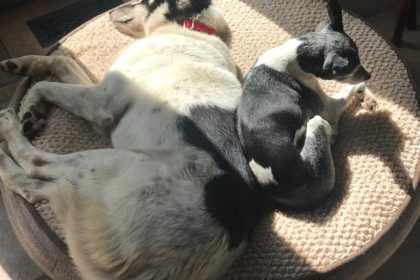



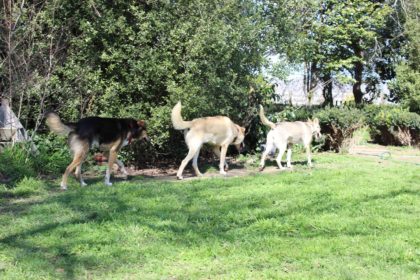
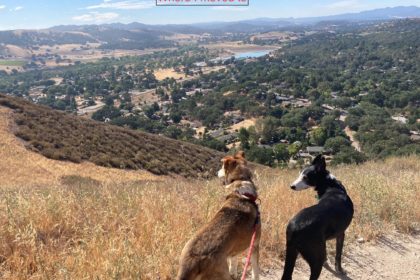
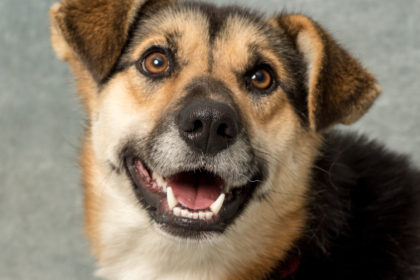
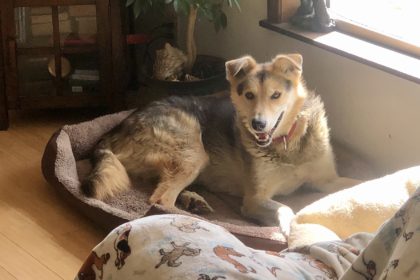
Big sigh … wonderful. I am very glad your Mom was able to travel with you this year. Surely it is a dream come true for every mother to see her beautiful, strong daughter as she lives out her dream, completely in her element.
These are wonderful notes. I remember watching the dogs drop and gauging your position, thinking – well, she is well-placed for moving strong up the Yukon – despite the fewer dogs. I was sorry when little Tug dropped (Cutter's littermate), but was struck by how many strong dogs and strong performers you still had on the team: Tatfish, Biscuit, Quito, Nacho, Beemer, Olivia, Boondocks.
Aliy! Thank you for the idea of the medal transfer to TUG for her first Iditarod! Seeing her race next to Tatfish in the videos will always make the 2011 race special for me, especially her talent negotiating the 'Steps'!
Jeff
Can't Wait to read the next part.
Tara